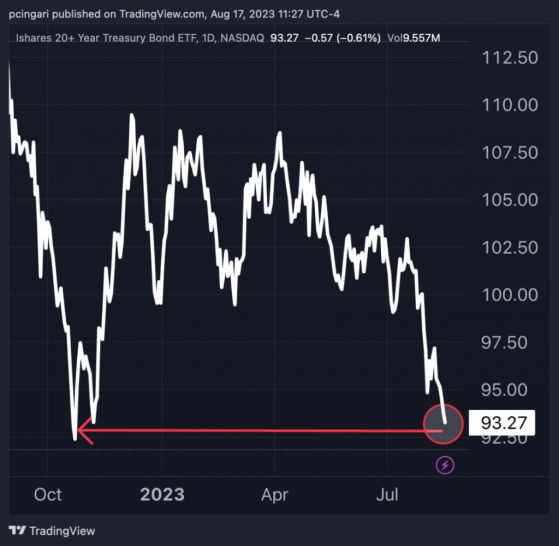Benzinga - by Piero Cingari, Benzinga Staff Writer. Fitch Ratings emphasizes that the foremost concern for the global credit landscape remains centered on persistently high inflation and interest rates.
The credit rating agency highlighted in its recent Risk Headquarters report that despite a recent decrease in headline inflation rates across the U.S. and eurozone during the second quarter of 2023, core inflation surpassed central bank targets.
The overall macroeconomic picture has improved. However, Fitch acknowledges the presence of potential headwinds. Tighter lending conditions and a more cautious approach taken by central banks contribute to a gloomy economic outlook.
Fitch's base-case forecasts predict “a shallow recession in the US, limited growth in the eurozone and building risks to China's recovery.”
Cracks In The Real Estate Sector Emerge Fitch specifically draws attention to vulnerabilities in the commercial real estate (CRE) sector and the challenges that could hinder China’s post-pandemic recovery.
Notably, property data from the second quarter of 2023 reveals a notable decline in property sales in China, alongside ongoing pressures faced by property developers.
This, in turn, poses risks to the sustained acceleration of China’s economic growth.
The commercial real estate sector in the U.S. also faces difficulties. Several prominent mortgage real estate investment trusts (REITs) are reducing new lending, accompanied by weaker performance results from both large and regional U.S. banks.
Bond Market Volatility Persists Amidst Rising Treasury Yields Recent sessions have witnessed substantial pressures on the bond market, leading to a surge in Treasury yields, particularly in longer-term maturities.
The benchmark 10-year Treasury yield has exceeded 4.30%, approaching the previous peak of 4.33% seen in October 2022, which was last observed in October 2007.
Exchange-traded funds (ETFs) tracking longer-term Treasury bonds have also encountered challenges. The iShares 20+ Year Treasury Bond ETF (NASDAQ:TLT), known for its sensitivity to the so-called ‘duration risk’, recorded a 0.6% decline on Thursday, on track for the fourth consecutive week of losses, possibly setting the stage for revisiting lows witnessed in 2022.
Chart: iShares 20+ Year Treasury Bond ETF On Track To Revisit 2022 Lows
The volatility has also extended to corporate bonds issued by U.S. companies. The iShares iBoxx $ Investment Grade Corporate Bond ETF (NYSE:LQD) fell to the lowest since early November 2022.
The effective yield on high-grade U.S. corporate bonds spiked to 5.83%, marking the highest level since November 2022. Notably, bonds issued by Ely Lilly & Company (NYSE:LLY), rated A+ by S&P and A1 by Moody’s, and maturing in March 2045, experienced a 5.43% drop on the day, falling to 79 cents on the dollar.
Other longer-dated corporate bonds also faced losses, including Elevance Health Inc. (NYSE:ELV) 4.65% maturing in 2044, which fell 4.7%, and American International Group Inc. (NYSE:AIG) 4.7% maturing in 2035, which declined by 3.6%.
Chart: U.S. High-Grade Corporate Bond Yields Surge To The Highest Since November 2022
Read now: Market Sentiment Teeters As US Indices, Including S&P 500, Break Key Supports: Next Levels To Watch
© 2023 Benzinga.com. Benzinga does not provide investment advice. All rights reserved.
Read the original article on Benzinga
